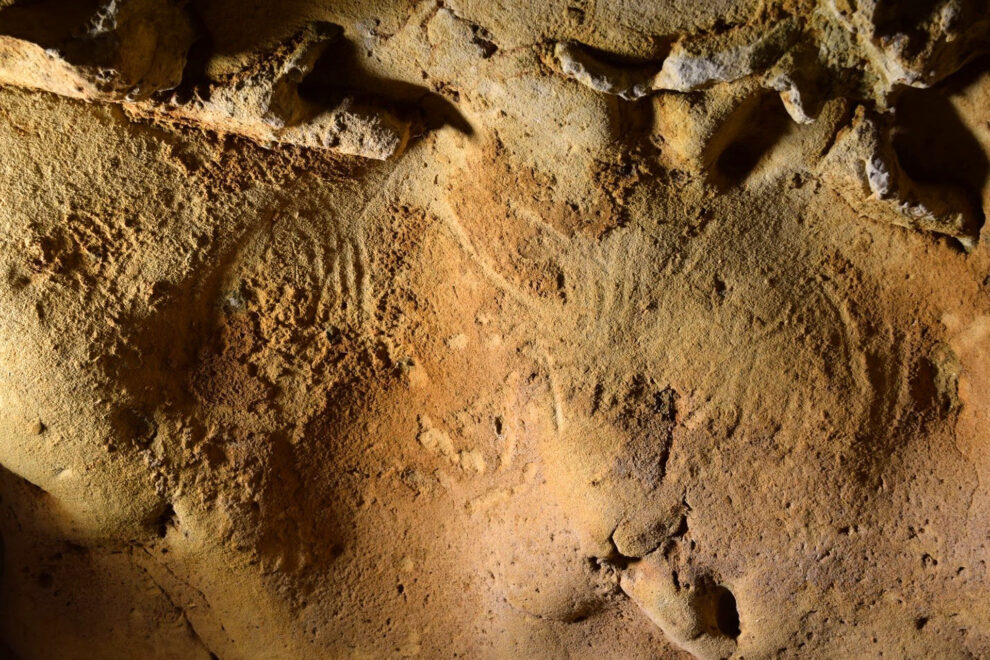Non-figurative markings on the walls of La Roche-Cotard cave in France are the oldest known engravings made by our sister species.
The site of La Roche-Cotard is in Indre-et-Loire, in the commune of Langeais, France.
Discovered in January 1912, the cave is on the south-facing slope on the right bank of the Loire.
The cave comprises a narrow gallery, a tunnel some 10 m (33 feet) long and three wider chambers, extending around 40 m (131 feet) in all.
The site is particularly notable for the discovery of the so-called Mask of La Roche-Cotard, a proto-figurine possibly created by Neanderthals.
“Research in recent decades has revealed a great deal about the cultural complexity of Neanderthals,” said University of Tours reseacher Jean-Claude Marquet and his colleagues.
“However, relatively little is known about their symbolic or artistic expression.”
“Only a short list of symbolic productions are attributed to Neanderthals, and the interpretation of these is often the subject of debate.”
In the new study, the researchers identified a series of non-figurative markings — interpreted as finger-flutings, marks made by human hands — on the walls of La Roche-Cotard cave as the oldest known Neanderthal engravings.
They made a plotting analysis and used photogrammetry to create 3D models of these markings, comparing them with known and experimental human markings.
Based on the shape, spacing, and arrangement of these engravings, the scientists concluded that they are deliberate, organized and intentional shapes created by human hands.
They also dated cave sediments with optically-stimulated luminescence dating, determining that the cave became closed off by infilling sediment around 57,000 years ago, well before Homo sapiens became established in the region.
This, combined with the fact that stone tools within the cave are only Mousterian, a technology associated with Neanderthals, is strong evidence that these engravings are the work of Neanderthals.
Because these are non-figurative symbols, the intent behind them is unclear.
They are, however, of a similar age with cave engravings made by Homo sapiens in other parts of the world.
This adds to a growing body of evidence that the behavior and activities of Neanderthals were similarly complex and diverse as those of our own ancestors.
“Fifteen years after the resumption of excavations at the La Roche-Cotard site, the engravings have been dated to over 57,000 years ago and, thanks to stratigraphy, probably to around 75,000 years ago, making this the oldest decorated cave in France, if not Europe,” the authors said.
Their work will be published in the journal PLoS ONE.
Source: Sci News































